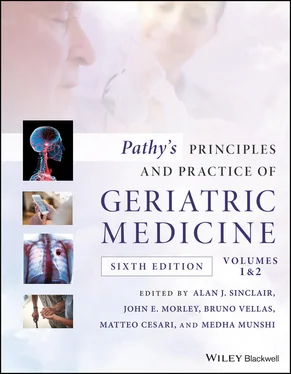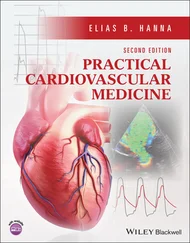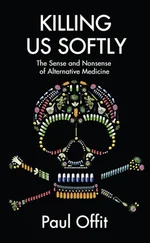Pathy's Principles and Practice of Geriatric Medicine
Здесь есть возможность читать онлайн «Pathy's Principles and Practice of Geriatric Medicine» — ознакомительный отрывок электронной книги совершенно бесплатно, а после прочтения отрывка купить полную версию. В некоторых случаях можно слушать аудио, скачать через торрент в формате fb2 и присутствует краткое содержание. Жанр: unrecognised, на английском языке. Описание произведения, (предисловие) а так же отзывы посетителей доступны на портале библиотеки ЛибКат.
- Название:Pathy's Principles and Practice of Geriatric Medicine
- Автор:
- Жанр:
- Год:неизвестен
- ISBN:нет данных
- Рейтинг книги:3 / 5. Голосов: 1
-
Избранное:Добавить в избранное
- Отзывы:
-
Ваша оценка:
- 60
- 1
- 2
- 3
- 4
- 5
Pathy's Principles and Practice of Geriatric Medicine: краткое содержание, описание и аннотация
Предлагаем к чтению аннотацию, описание, краткое содержание или предисловие (зависит от того, что написал сам автор книги «Pathy's Principles and Practice of Geriatric Medicine»). Если вы не нашли необходимую информацию о книге — напишите в комментариях, мы постараемся отыскать её.
Pathy’s Principles and Practice of Geriatric Medicine
Pathy's Principles and Practice of Geriatric Medicine — читать онлайн ознакомительный отрывок
Ниже представлен текст книги, разбитый по страницам. Система сохранения места последней прочитанной страницы, позволяет с удобством читать онлайн бесплатно книгу «Pathy's Principles and Practice of Geriatric Medicine», без необходимости каждый раз заново искать на чём Вы остановились. Поставьте закладку, и сможете в любой момент перейти на страницу, на которой закончили чтение.
Интервал:
Закладка:

Figure 22.4 Diagnostic laboratory values for vitamin B12 deficiency anaemia.
In summary, vitamin B12 deficiency anaemia results from inadequate vitamin B12 intake or malabsorption. There is no gold standard diagnostic test. The diagnosis relies on the presence of anaemia (RBCs may or may not be macrocytic) and a low B12 level. Serum MMA and homocysteine levels can be added to increase diagnostic sensitivity but are not required. Treatment can occur via oral or IM supplementation, but in general, oral supplementation is easier and less costly to administer, and likely as effective in most cases if given at high enough doses. Haemoglobin and B12 levels can be rechecked in three months after initiation of supplementation to validate treatment response.
Folate deficiency anaemia
Folate deficiency anaemia has become uncommon in the United States after a 1998 mandate by the Food and Drug Administration to fortify all grain products with folic acid. This was done in an effort to reduce congenital neural tube defects. 43Folate is considered an ‘essential micronutrient’. It is not synthesized by the body and needs to be consumed through diet or supplementation. Also known as vitamin B9, folate plays an essential role in neurotransmitter synthesis as well as cellular DNA synthesis and repair. 44It is primarily contained in green, leafy vegetables and also in some animal products. Folic acid is the synthesized form of folate that is present in supplements or fortified foods and has a higher bioavailability than folate. Although rare, folate deficiency can still occur due to inadequate intake, malabsorption, or conditions resulting in increased folate requirements. Several medications such as methotrexate, sulfasalazine, trimethoprim, and phenytoin interfere with folate metabolism and can lead to deficiencies in the absence of supplementation. 45
Individuals with chronic malnourishment, restrictive diets, or alcoholism are at risk for folate deficiency and resultant anaemia. Impaired absorption can occur in those with a history of gastric or bowel resection or of inflammatory bowel disease since folate is absorbed in the jejunum by passive transport. Vitamin B12 deficiency can lead to relative folate deficiency because vitamin B12 is required for cellular metabolism cycles that convert folate into its most active bioavailable form, tetrahydrofolate. 46In such cases, once vitamin B12 levels are corrected, the folate deficiency resolves without supplementation. Unlike vitamin B12, folate is not stored in large quantities, and deficiencies develop much more quickly, over weeks to months. Once deficient, individuals may develop non‐specific symptoms similar to those seen in vitamin B12 deficiency – glossitis, fatigue, depression, and/or cognitive impairment.
Laboratory studies are used to confirm the diagnosis of folate deficiency anaemia. Classically considered a megaloblastic anaemia, a low haemoglobin, elevated MCV, and low serum folate level will be seen. Typically, there is also a low reticulocyte count. Serum folate levels <2 ng/mL are considered deficient, while levels 2–4 ng/mL are borderline and >4 ng/mL are considered normal. When folate levels are borderline, further confirmation of a deficiency can occur with MMA and homocysteine levels. MMA levels are normal, while homocysteine levels are elevated in folate deficiency. This is contrasted in vitamin B12 deficiency, which can be confirmed when both the MMA and homocysteine levels are elevated. Another confirmative test that may be useful is the quantitative level of folate within RBCs (as opposed to the folate level in blood plasma). Because this is relatively fixed for the lifecycle of the RBC, it is indicative of folate status over the preceding 120 days and can help identify when the deficiency began. 47The serum folate level varies widely on recent food ingestion and is not indicative of overall bioavailable folate, thus limiting its accuracy. There are no evidence‐based guidelines regarding screening for folate deficiency, and routine screening is not recommended. However, screening should be considered in high‐risk individuals who are anaemic and also in the workup of anaemia of unknown aetiology.
In people with confirmed folate deficiency anaemia, supplementation must be initiated. Most commonly, folate deficiency is treated with oral replacement, although IV preparations are available for those unable to consume oral repletion. No evidence‐based guidelines exist regarding dose or duration of treatment; however, folic acid 1 mg daily is a typical supplementation dose. If the folate deficiency is secondary to malabsorption, supplementation will likely be needed indefinitely. If medication‐induced, supplementation should occur for as long as the individual is receiving the offending medication.
In summary, folate deficiency anaemia is not as common in the US as it once was because of government‐mandated grain‐fortification policies. However, it is still seen in countries that lack these policies and can occur globally in those with malnutrition or restrictive diets, impaired absorption, or high RBC turnover states. There are also several medications that induce folate deficiency. The diagnosis of folate deficiency anaemia typically relies on low haemoglobin and low serum folate levels and can be confirmed by low RBC folate, normal MMA, and elevated homocysteine levels. At the present time, there are no evidence‐based guidelines for screening or treatment, but generally, oral folic acid supplementation daily is sufficient for correction of plasma levels and stores.
Inflammatory anaemias
Anaemia of chronic disease
Anaemia of chronic disease is also known as anaemia of chronic inflammation and is a difficult‐to‐treat anaemia with a multifactorial pathophysiology. The cornerstone of anaemia of chronic disease is underlying inflammation (acute or chronic) and excess production of cytokines. It is considered a functional iron deficiency, meaning total body iron stores are normal or elevated but an inadequate amount of usable free iron is available for the bone marrow production of RBCs. In addition to deranged iron homeostasis, inflammation leads to diminished responses to renally produced erythropoietin and its effects on bone marrow stimulation, decreased proliferation of bone marrow progenitor stem cells, and decreased RBC lifespan ( Figure 22.5). Anaemia of chronic disease is the most common type of anaemia seen at older age and is seen in up to 70% of hospitalized elderly patients. 48It is also quite common in morbidly obese patients because of circulating inflammatory factors released by excess adipose tissue. 49Treatment is challenging; the hallmark of treatment is eliminating the chronic inflammation, which is often not possible due to the underlying chronic disease processes that are present in so many older adults.

Figure 22.5 Key mechanisms for anaemia of chronic disease.
Anaemia of chronic disease is termed a functional iron deficiency because of the altered iron haemostasis that occurs as a result of circulating inflammatory cytokines (i.e. interleukins and tumour necrosis factor). Hepcidin, a peptide produced by the liver, is the driver of iron homeostasis and regulates iron uptake by the ferroportin transporter in the duodenal enterocytes. 50Additionally, hepcidin regulates the release of iron from macrophages into the circulation and release of iron bound to ferritin, its storage site in the liver. During inflammatory states, hepcidin, an acute‐phase reactant, is over‐produced and in turn prohibits iron uptake from dietary sources and its release into the blood from gut enterocytes. It also leads to increased iron uptake and retention by macrophages. 51The over‐expression of hepcidin in essence blocks the body’s natural iron‐recycling program occurring in the reticuloendothelial system and locks up iron in its storage form in ferritin, leaving little usable iron substrate for the bone marrow production of RBCs.
Читать дальшеИнтервал:
Закладка:
Похожие книги на «Pathy's Principles and Practice of Geriatric Medicine»
Представляем Вашему вниманию похожие книги на «Pathy's Principles and Practice of Geriatric Medicine» списком для выбора. Мы отобрали схожую по названию и смыслу литературу в надежде предоставить читателям больше вариантов отыскать новые, интересные, ещё непрочитанные произведения.
Обсуждение, отзывы о книге «Pathy's Principles and Practice of Geriatric Medicine» и просто собственные мнения читателей. Оставьте ваши комментарии, напишите, что Вы думаете о произведении, его смысле или главных героях. Укажите что конкретно понравилось, а что нет, и почему Вы так считаете.












